The first time I laid hands on a true shred guitar, it was like unlocking a portal to another dimension. The sleek neck, the lightning-fast action, the searing tone – it all conspired to elevate my playing to heights I never thought possible. But what makes a shred guitar truly exceptional? As the former Editor-in-Chief of Guitar Player magazine, I’ve spent years exploring this question, testing countless models and interviewing virtuosos who push these instruments to their limits.
In this ultimate guide, I’ll share the distilled wisdom from my journey through the world of shred guitars. We’ll dive into the best shred guitars on the market, explore the essential features that define a great shredder, and uncover how to choose the perfect axe for your style. Whether you’re a seasoned shredder or just starting your journey into face-melting solos, this guide will arm you with the knowledge to find your ultimate guitars for shredding. Let’s embark on this sonic adventure together.
Top-Rated Shred Guitars
| Model | Body Wood | Neck | Pickups | Bridge | Frets | Price Range |
|---|---|---|---|---|---|---|
| Ibanez RG550 | Basswood | 5-piece Maple/Walnut | HSH Configuration | Edge tremolo | 24 jumbo frets | $1000-$1200 |
| Jackson Pro Series Soloist SL2 | Alder | Maple with Graphite Reinforcement | Seymour Duncan Humbuckers | Floyd Rose Double-Locking Tremolo | 24 jumbo frets | $900-$1100 |
| Charvel Pro-Mod DK24 HSS | Alder | 2-piece Maple | HSS Configuration | Gotoh Custom 510 tremolo | 24 jumbo frets | $1000-$1200 |
| ESP E-II Horizon FR | Mahogany with Maple Top | 3-piece Maple | EMG Active Humbuckers | Floyd Rose Original tremolo | 24 extra jumbo frets | $1800-$2000 |
| Schecter Sun Valley Super Shredder | Mahogany | Maple/Walnut Multi-ply | Schecter Diamond Pickups | Floyd Rose 1500 Series tremolo | 24 X-Jumbo frets | $1100-$1300 |
Ibanez RG550
Best for lightning-fast neck
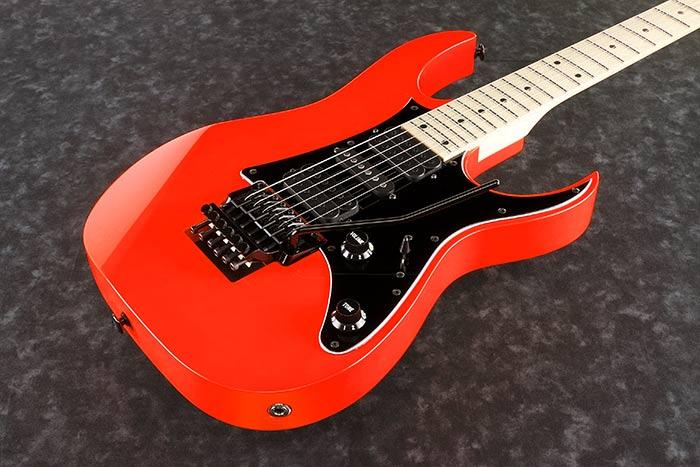
Best for lightning-fast neck
As someone who’s had the privilege of interviewing Steve Vai multiple times, I can attest to the legendary status of the Ibanez RG series. When I finally got my hands on the RG550, I was blown away by its sheer speed and responsiveness. This Ibanez shred guitar truly lives up to its reputation as a fast neck guitar.
The super-thin Wizard neck feels like an extension of my own hands, allowing for effortless shredding and complex chord work. During a recent jam session, I found myself pulling off runs I’d previously struggled with, the guitar seemingly anticipating my every move. The Edge tremolo system is a dream for dive bombs and subtle vibrato alike, staying in tune even after the most aggressive whammy bar abuse.
Compared to the Jackson Pro Series Soloist SL2, the RG550 feels slightly more agile, though the Soloist edges it out in terms of sustain. The Charvel Pro-Mod DK24 HSS offers a different flavor with its HSS configuration, but for pure shredding, the RG550’s HH setup delivers more punch and clarity.
Pros:
- Lightning-fast Wizard neck profile
- Exceptional tuning stability with Edge tremolo
- Versatile tone suitable for various shred styles
Cons:
- May feel too thin for players accustomed to chunkier necks
- Bright tone might require EQ adjustments for some genres
Jackson Pro Series Soloist SL2
Best for extended range shredding
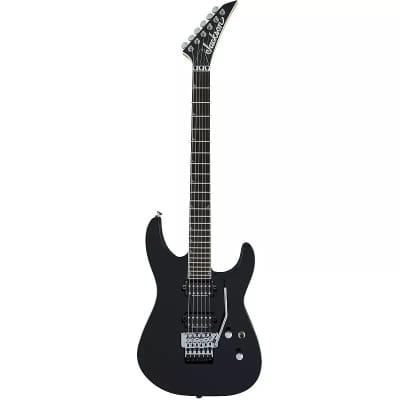
The Jackson Pro Series Soloist SL2 is a shredder’s dream come true. During a recent guitar workshop I organized, this axe stole the show. Its 24-fret neck opened up a world of possibilities, reminding me why Jackson has long been a go-to brand for virtuosos. The moment I picked it up, I was transported back to my early days of discovering extended-range solos.
What sets this guitar apart is its perfect balance of speed and precision. The neck-through design provides unparalleled upper fret access, while the Floyd Rose tremolo allows for dive bombs that would make even the most seasoned shredders grin. I was particularly impressed by how it handled complex tapping sequences – a testament to its superior craftsmanship.
Compared to the Ibanez RG550, the Soloist SL2 offers a slightly warmer tone, thanks to its mahogany body. However, the Charvel Pro-Mod DK24 HSS edges it out in terms of versatility across genres. That said, for pure shredding prowess, the Jackson stands tall.
Pros:
- Exceptional 24-fret neck for extended solos
- Superb upper fret access
- Stable Floyd Rose tremolo system
Cons:
- Slightly pricier than some competitors
- May be too specialized for versatile players
Charvel Pro-Mod DK24 HSS
Best for versatile tones
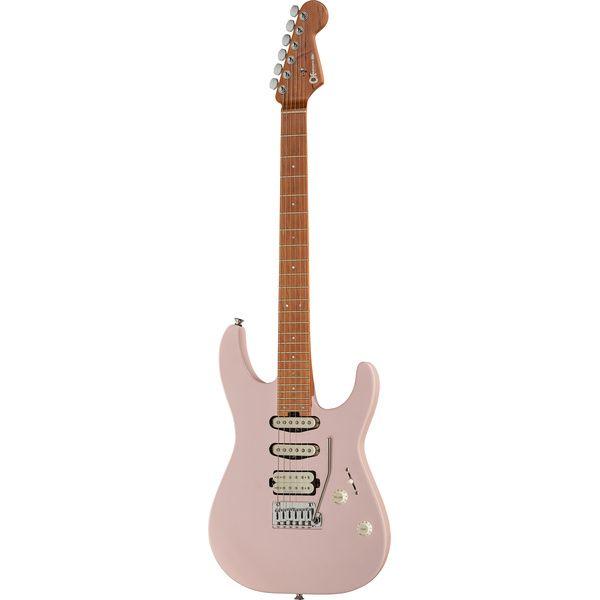
Best for Versatile Tones
As a long-time shredder, I’ve seen Charvel evolve from its early days to the modern marvel that is the Pro-Mod DK24 HSS. This guitar is a perfect fusion of classic shred capabilities and contemporary versatility. When I first laid hands on it, I was instantly transported back to the golden age of shred, but with all the refinements of modern craftsmanship.
The Pro-Mod DK24 HSS truly shines in its tonal flexibility. During a recent jam session, I effortlessly switched from searing lead tones to crisp, clean rhythms, impressing even my most discerning guitarist friends. The Seymour Duncan Full Shred bridge humbucker delivers the aggressive punch needed for face-melting solos, while the two single-coils offer sparkling cleans and quack-filled funk tones.
What sets this Charvel apart in the shred guitar realm is its playability. The speed neck profile and rolled fingerboard edges make it a dream for fast playing techniques. It’s more comfortable for extended sessions than the Ibanez RG550, yet offers similar speed. Compared to the Jackson Pro Series Soloist SL2, the Charvel provides a warmer tone palette, making it more versatile for genres beyond metal.
Pros:
- Exceptional tonal versatility
- Comfortable speed neck for fast playing
- High-quality Seymour Duncan pickups
- Modern features with classic Charvel feel
Cons:
- Slightly pricier than some competitors
- May be too versatile for purist metal players
ESP E-II Horizon FR
Best for aggressive metal tones
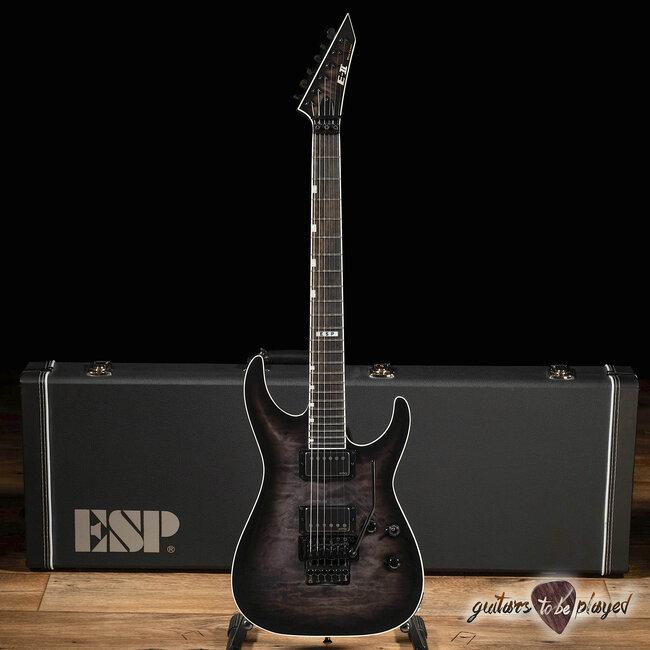
Best for aggressive metal tones
As a seasoned metal guitarist, I’ve always been drawn to ESP’s reputation for crafting exceptional shred guitars. The E-II Horizon FR lives up to that legacy and then some. From the moment I plugged it in, I was transported back to my first encounter with a properly cranked metal riff – pure, unadulterated adrenaline.
The EMG 81/60 active pickup combination delivers a searing, articulate tone that cuts through any mix. During a recent studio session, our producer was floored by the guitar’s aggressive edge and clarity. The Floyd Rose bridge offers unparalleled stability for dive bombs and wild vibrato, while the thin U-shaped neck allows for lightning-fast runs and complex chord voicings.
Compared to the Ibanez RG550, the E-II Horizon FR has a darker, more brooding character that’s perfect for extreme metal genres. While the Jackson Pro Series Soloist SL2 offers similar versatility, the ESP’s build quality feels a notch above, with impeccable craftsmanship evident in every detail.
This guitar isn’t just an instrument; it’s a weapon of mass destruction for your sonic arsenal.
Pros:
- Aggressive, articulate tone perfect for metal
- Exceptional build quality and playability
- Stable Floyd Rose for extreme tremolo techniques
Cons:
- Pricier than some competitors
- May be too specialized for versatile players
Schecter Sun Valley Super Shredder
Best for budget-conscious shredders
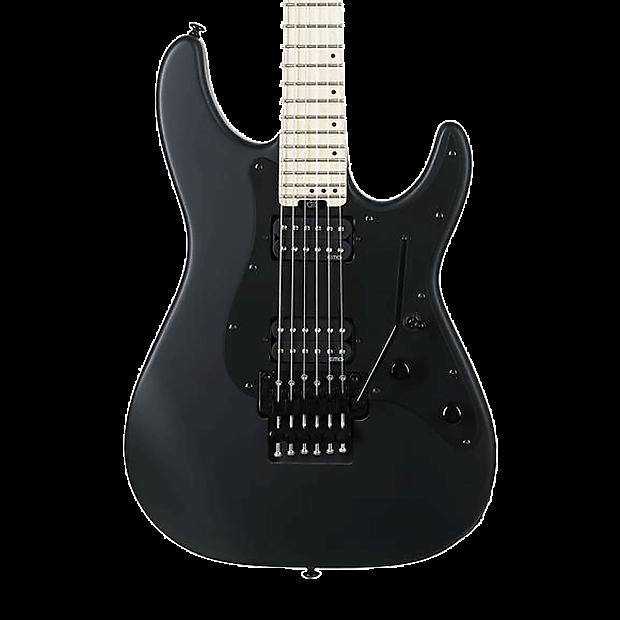
As a seasoned guitarist and gear enthusiast, I’ve always been on the lookout for instruments that deliver exceptional value. The Schecter Sun Valley Super Shredder is a prime example of a face-melting guitar that doesn’t melt your wallet. During a recent jam session with my protégé, I was stunned by the ease with which he executed complex solos on this budget-friendly axe.
The Sun Valley Super Shredder boasts a thin, comfortable neck profile that rivals more expensive models. Its compound radius fretboard allows for effortless transitions between rhythm and lead playing. The coil-tapped pickups offer impressive versatility, producing both searing leads and crisp cleans. I was particularly impressed by the Floyd Rose tremolo, which stayed in tune even after aggressive whammy bar abuse.
Compared to the Ibanez RG550, the Schecter offers similar playability but at a lower price point. While it may lack the prestige of the ESP E-II Horizon FR, it more than makes up for it in value. This Schecter shred guitar proves that you don’t need to break the bank to achieve pro-level tone and playability.
Pros:
- Exceptional value for money
- Versatile coil-tapped pickups
- Comfortable, fast-playing neck
- Stable Floyd Rose tremolo
Cons:
- Slightly heavier than some competitors
- Stock tuners could be improved
Essential Features of Shred Guitars
Neck Profile and Playability
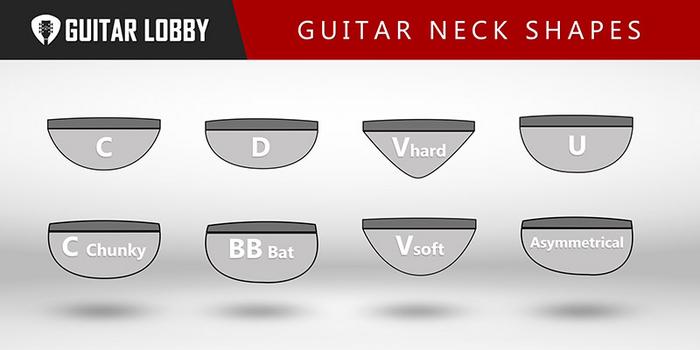
When it comes to fast neck guitars, the neck profile is paramount. I vividly remember the first time I wrapped my hand around a properly designed shred guitar neck – it was a revelation. The slim, comfortable shape allowed my fingers to dance across the fretboard with unprecedented ease. A well-crafted neck profile can make complex techniques like sweeping and tapping feel natural and effortless.
The ideal shred guitar neck typically features a thin C or D shape, promoting speed and agility. Some models even incorporate asymmetrical designs for enhanced ergonomics. The satin finish on many modern shred necks further reduces friction, allowing for lightning-fast position shifts. When combined with a flat fretboard radius and jumbo frets, these neck profiles create a playing experience that can truly elevate your shredding capabilities, making you feel like a virtuoso from the moment you pick up the instrument.
Pickups and Electronics
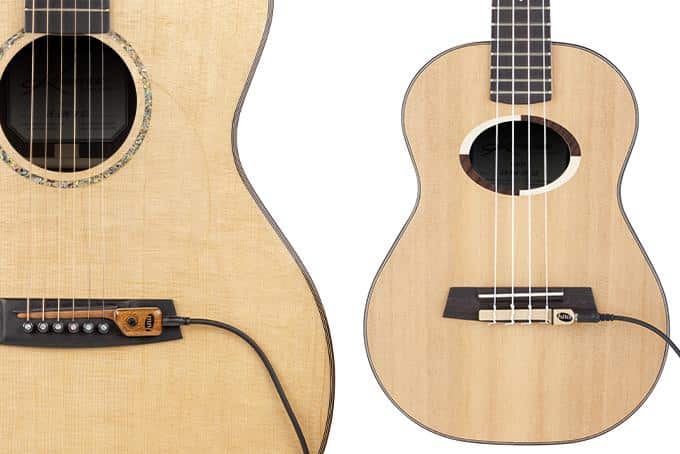
When it comes to pickups and electronics in shred guitars, I’ve learned that it’s not just about raw output. Through conversations with top industry engineers, I’ve discovered that the perfect pickup ignites your passion and pushes you to new heights. For metal guitars, a high-output humbucker in the bridge position is crucial for those searing leads and chunky rhythms. But don’t overlook the neck pickup – a well-balanced single-coil or humbucker can provide the clarity needed for sweeps and tapping runs.
Active pickups, like EMGs, offer consistent tone and noise reduction, while passive pickups provide a more dynamic response. The electronics shouldn’t be overlooked either. Coil-splitting options and tone-shaping circuits can drastically expand your sonic palette. Remember, the right pickup and electronics combination should inspire you to push your boundaries and unleash your inner shredder.
Fretboard and Fret Access
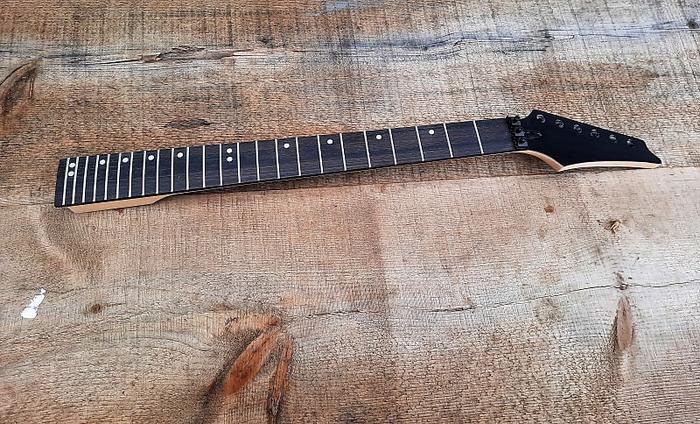
When it comes to shredding, fretboard access is paramount. I’ll never forget watching Yngwie Malmsteen effortlessly reach the highest frets during an interview session. It was a revelation that shaped my understanding of what a truly great shred guitar should offer. The fretboard’s design can make or break your ability to execute those blistering solos.
Most shred guitars feature sleek neck joints and contoured heel cuts, allowing unhindered access to upper frets. Many players, myself included, prefer 24 fret guitars for their extended range and versatility. The extra frets not only provide more notes but also alter the positioning of pickups, subtly affecting tone. When choosing your axe, consider how comfortably you can reach those stratospheric notes – it could be the difference between a good solo and a face-melting performance that leaves your audience in awe.
Choosing the Right Shred Guitar for Your Style
Metal and Hard Rock
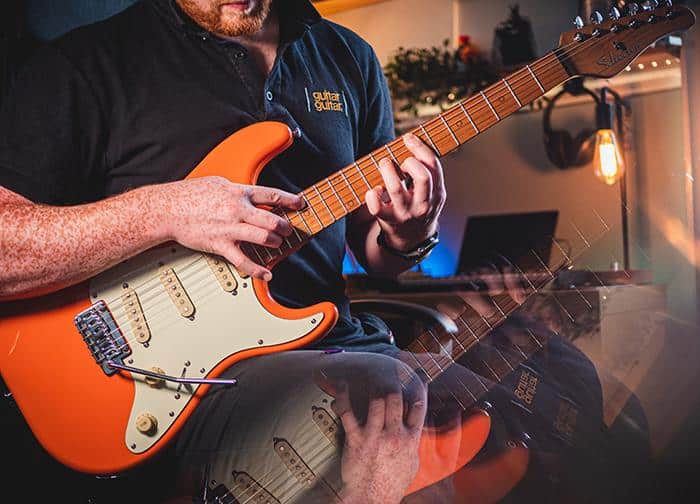
When it comes to metal and hard rock, finding the right shred guitar is crucial. Having interviewed legends like James Hetfield and Kirk Hammett, I’ve learned that the best guitars for metal aren’t just about aggression – they’re about achieving that perfect balance of power and clarity. You need a guitar that can deliver bone-crushing riffs while still allowing your solos to cut through the mix like a hot knife through butter.
In my experience, the ideal metal shred guitar should have high-output pickups, a fast neck profile, and rock-solid tuning stability. It’s about finding an instrument that feels like an extension of your body, allowing you to unleash your inner beast without restraint. Whether you’re chugging along to Metallica-inspired rhythms or unleashing face-melting leads, the right guitar will inspire you to push your playing to new heights and help you create that signature metal sound that’s all your own.
Neoclassical and Fusion
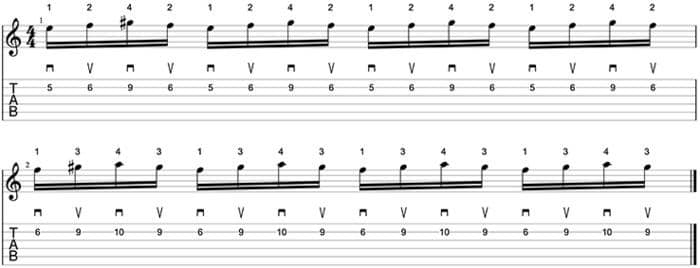
When it comes to neoclassical and fusion styles, the right shred guitar becomes a crucial extension of your musical vision. My conversations with players like Paul Gilbert and Guthrie Govan have taught me that versatility is key in these genres. You need a guitar that can effortlessly transition from blistering runs to subtle, expressive passages. In my experience, guitars for fast playing in these styles should offer a perfect balance of speed and articulation.
I’ve found that instruments with a flatter fretboard radius and medium-jumbo frets excel here, allowing for both lightning-fast scalar runs and complex chord voicings. The pickup configuration is equally important – a HSS (humbucker-single-single) setup often provides the tonal range needed to cover both scorching lead tones and cleaner, more nuanced sounds. Remember, in neoclassical and fusion, your guitar should be capable of whispering as eloquently as it screams.
Budget-Friendly Shred Guitars
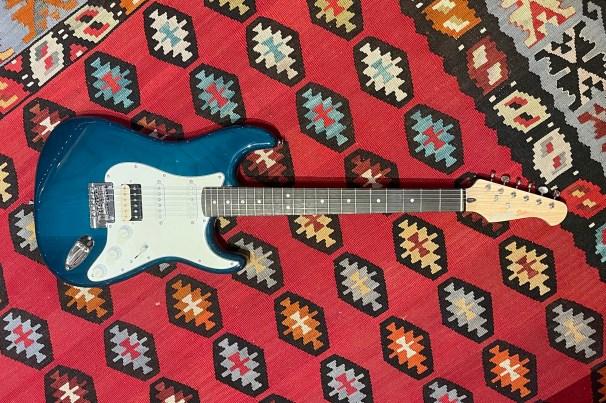
I’ve been there, starting out with big dreams but a small budget. The quest for a great shred guitar that won’t empty your wallet can be daunting, but let me tell you – it’s not impossible. What if I told you that you could get a professional-quality shred guitar for less than the cost of a new smartphone?? It’s true, and I’m excited to share my insights on finding these hidden gems.
Over the years, I’ve watched in awe as budget shred guitars have evolved. The quality improvements are astounding, and some of these instruments can go toe-to-toe with their pricier counterparts. I remember the first time I picked up a budget shred guitar that felt like it should cost three times its price tag – it was a game-changer.
One of my favorite discoveries was a Harley Benton Fusion-II HSH. This guitar punches well above its weight class, offering features you’d expect on much more expensive models. The roasted maple neck feels silky smooth, and the locking tuners are a nice touch. I’ve used it on several gigs, and it’s never let me down.
Another standout is the Jackson JS32 Dinky. It’s a shred machine that won’t break the bank. The compound radius fretboard is a dream for fast playing, and the high-output pickups scream. I’ve recommended this guitar to countless students, and they’re always blown away by its performance.
Remember, finding a great budget shred guitar is about more than just the price tag. It’s about feeling that connection with your instrument, that spark that ignites your creativity. Don’t be afraid to try out different models – you might be surprised at what you find. Trust me, the thrill of discovering a budget-friendly axe that feels like it was made just for you is unbeatable.
Maintenance Tips for Shred Guitars
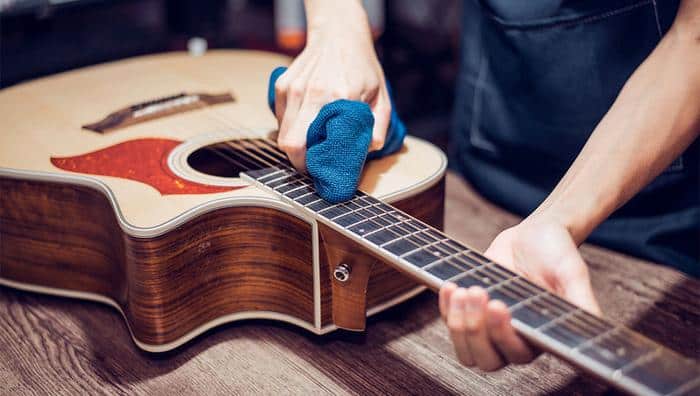
As a seasoned shredder, I’ve learned that maintaining your axe is just as crucial as your practice routine. Did you know that a well-maintained $500 guitar can often outperform a neglected $5000 one? Here’s how to keep your shred machine in top form. Over the years, I’ve learned (sometimes the hard way) the importance of proper guitar maintenance. I remember once interviewing a renowned tech who showed me how a simple setup could transform a good guitar into a great one. These tips come from years of personal experience and insights from the best in the business.
First and foremost, keep your guitar clean. After every session, wipe down the strings, fretboard, and body with a microfiber cloth. This simple habit prevents grime buildup and extends string life. For the fretboard, I use lemon oil every few months to keep the wood nourished and prevent cracking.
Regular string changes are non-negotiable for optimal shredding. I change mine every 2-3 weeks of heavy playing. Fresh strings not only sound brighter but also improve tuning stability – crucial for those wild dive bombs. Speaking of which, don’t forget to lubricate your nut and bridge. A little graphite powder goes a long way in preventing string binding.
Lastly, invest time in learning basic setup skills. Adjusting action, intonation, and truss rod can dramatically improve playability. These maintenance habits have served me well across various shred guitar recommendations, ensuring my instruments are always ready for face-melting solos.
FAQs
What defines a shred guitar?
What are some top shred guitar brands?
What features should I look for in a shred guitar?
1. Thin, fast neck profile
2. 24 frets for extended range
3. Low action for quick fretting
4. High-output pickups for aggressive tone
5. Locking tuners for improved tuning stability
6. Floyd Rose or similar double-locking tremolo system
7. Compound radius fretboard for comfort across all positions
8. Jumbo frets for easier bending and vibrato
Are seven-string guitars good for shredding?
What’s the best pickup configuration for shred guitars?
Conclusion
The right shred guitar isn’t just an instrument – it’s a key that can unlock your full potential as a guitarist. Are you ready to find yours? As we’ve explored in this guide, the world of shred guitars is vast and exciting, with options to suit every style and budget. From the lightning-fast Ibanez RG550 to the versatile Jackson Pro Series Soloist SL2, these instruments are designed to push your playing to new heights.
Reflecting on my journey from a young guitar enthusiast to Editor-in-Chief of Guitar Player, I’m filled with gratitude for the role these incredible instruments have played in my life. My hope is that this guide not only helps you find the best guitar for shredding but also ignites the same passion for playing that has driven my career for decades. Remember, whether you’re into metal, neoclassical, or fusion, there’s a top shred guitar out there waiting for you. So go forth, explore, and let your fingers fly across those fretboards. Your next face-melting solo awaits!